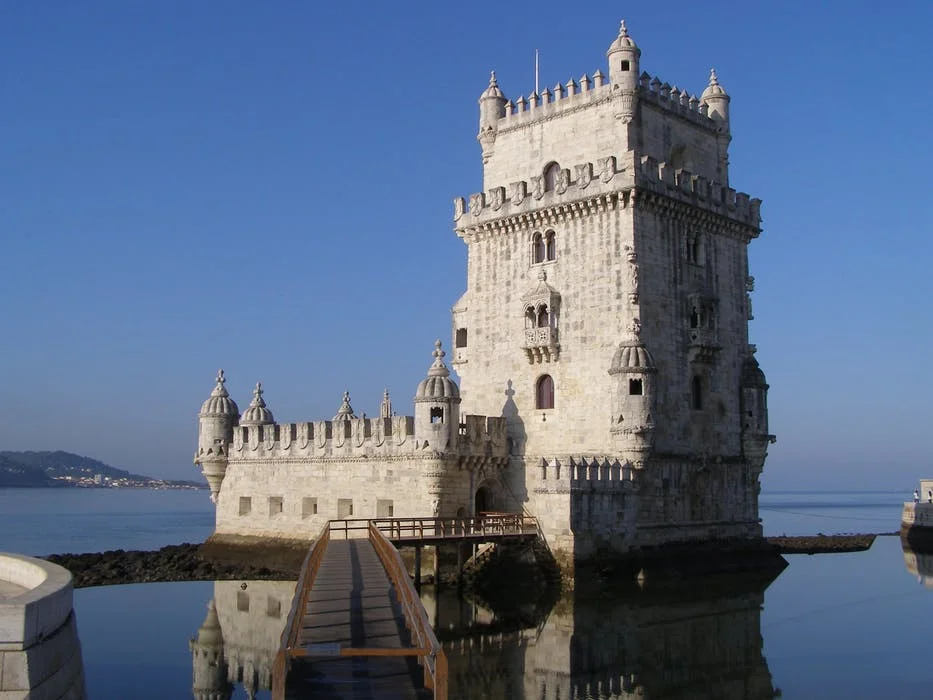Avid historian, traveller and writer Belinda Birchall takes us deep into the history of Lisbon with its fascinating past that includes a massive earthquake producing a tsunami and fire that nearly destroyed the city. What remained and what was restored leaves us with the eye-catching city that we know and love today.
What was your first impressions of Lisbon?
The beautiful Rua Augusta Arch, leading to the city centre. Photo credit: Belinda Birchall
Visiting Lisbon, you’ll notice a certain aesthetic to the city. Designed in a Neo-classical style, the buildings clustered around the Baixa Pombalina – the commercial centre of the city – are not only gorgeous and Insta-worthy, they have a very interesting history. The area was almost totally destroyed by a massive earthquake that struck Lisbon in 1755 – and was rebuilt thanks to the efforts of the Marquis de Pombal, a famous Portuguese statesman.
What happened during the Lisbon Earthquake of 1755?
On November 1, 1755 – All Saints Day – a massive earthquake struck Lisbon, measuring at least eight on the Richter scale. Fires broke out due to the candles burning at many church services taking place at the time, and a nine-meter tsunami killed many who had fled from the city to the riverside. It is estimated that around 50,000 to 60,000 people were killed from the earthquakes, tsunami and the fires that swept the city.
Viewing one of the little side streets off Rossio Square. Photo credit: Belinda Birchall
The famed equestrian statue of Joseph I in the centre of Praça do Comercio. Photo credit: Belinda Birchall
How was the city rebuilt?
While the King of Portugal – Joseph I – survived the earthquake, he didn’t cope too well in the aftermath of the disaster. He retreated to a tent-castle complex while his trusted advisor, the Marquis de Pombal, set about re-designing the city. The Marquis’ order to “Bury the dead and heal the living” meant deceased were shipped to sea and burned to prevent disease spreading, potentially saving thousands more residents of the city.
With his direction, the Baixa Pombalina was rebuilt using an urban plan that contained some pretty progressive thinking for the time. It also laid the plans for the sweeping boulevards you can now see in downtown Lisbon, with many city buildings containing early seismic-protection measures. The city was almost cleared of debris by 1756.
What are some of the sites of Baixa Pombalina?
The centre of Baixa Pombalina is undoubtedly the Praça do Comercio. Prior to the earthquake, this was where the Lisbon Royal Palace was located. For many years, this was where ships would unload their wares for the people of Lisbon, thus becoming the door to the city. These days, it’s a prime spot for people watching. You can wander through the beautiful Rua Augusta Arch to the boulevard of the same name, or admire the statue of Joseph I in the centre of the square.
A trip to the roofless Convento do Carmo might make a bit more sense when you realise it was devastated during the earthquake, and town planners opted to leave it as is, as a reminder of the devastation that occurred. If you go a little further afield in the area, you’ll come across Rossio Square, which was rebuilt in the second half of the 18th century.
One of the liveliest squares in Lisbon, it is home to the Neo-Manueline Rossio Railway Station, the National Theatre, Café Nicola and the Column of Pedro IV. And in case you are wondering, it’s no coincidence that ‘Pombalina’ is part of the name of the downtown area of Lisbon. This recognises the massive contribution to the city of the Marquis de Pombal to the area that now bears his name.
A view of the Torre de Belem from the Rio Tejo. Photo credit: Belinda Birchall
How did Belém fare during the Earthquake?
Surprisingly well! One of most beautiful areas of Lisbon was relatively unscathed by the earthquake, with the roof of the Mosteiro dos Jeronimos staying put, despite its spindly looking support columns. With the area escaping devastation, some of the grandest monuments from Portugal’s golden age of discovery are in the area, including the beautiful nautical-inspired Belém Tower.
No trip to Lisbon is complete without visiting the Baixa Pombalina or Belém. Never fear – Traverse Journeys has you covered with Taste of Portugal.
About Belinda: Growing up in New Zealand, Belinda (and her husband Matt) decided to trade in their comfortable lives in Wellington for a stint in the Middle East. She splits her time between New Zealand and Dubai, with a lot of travel packed in between - visiting 20 countries in the last few years. Get more travel tips on her blog and follow her travels on Instagram!
The spectacularly designed Mosteiro dos Jeronimos - which survived the Lisbon Earthquake unscathed. Photo credit: Belinda Birchall











